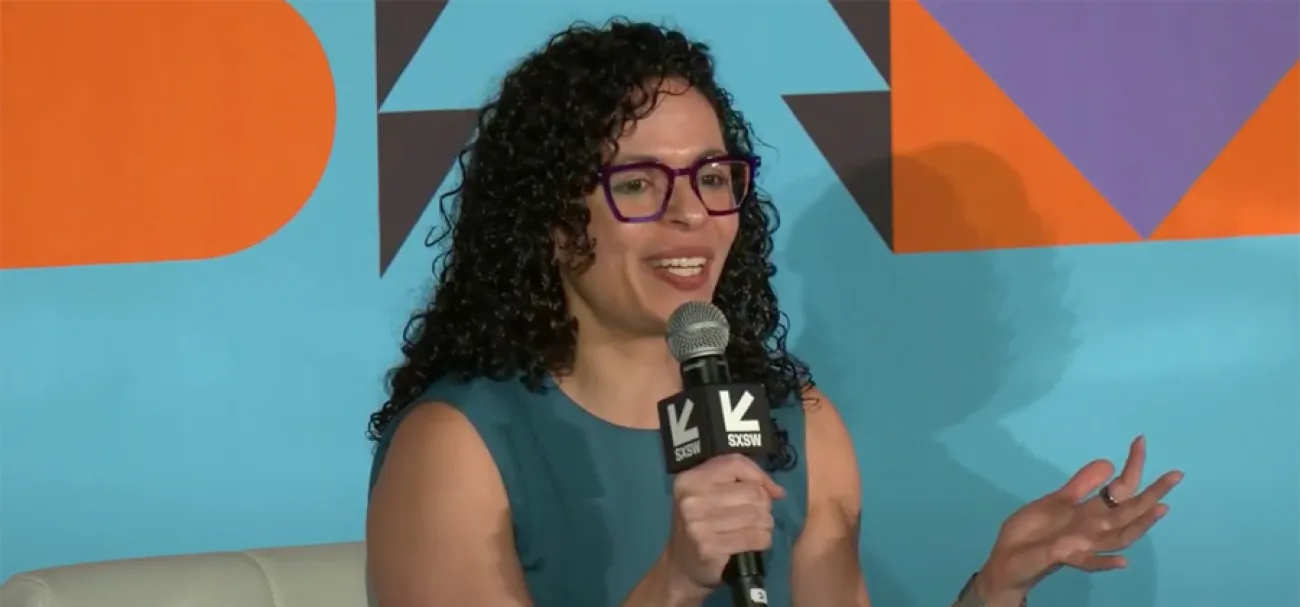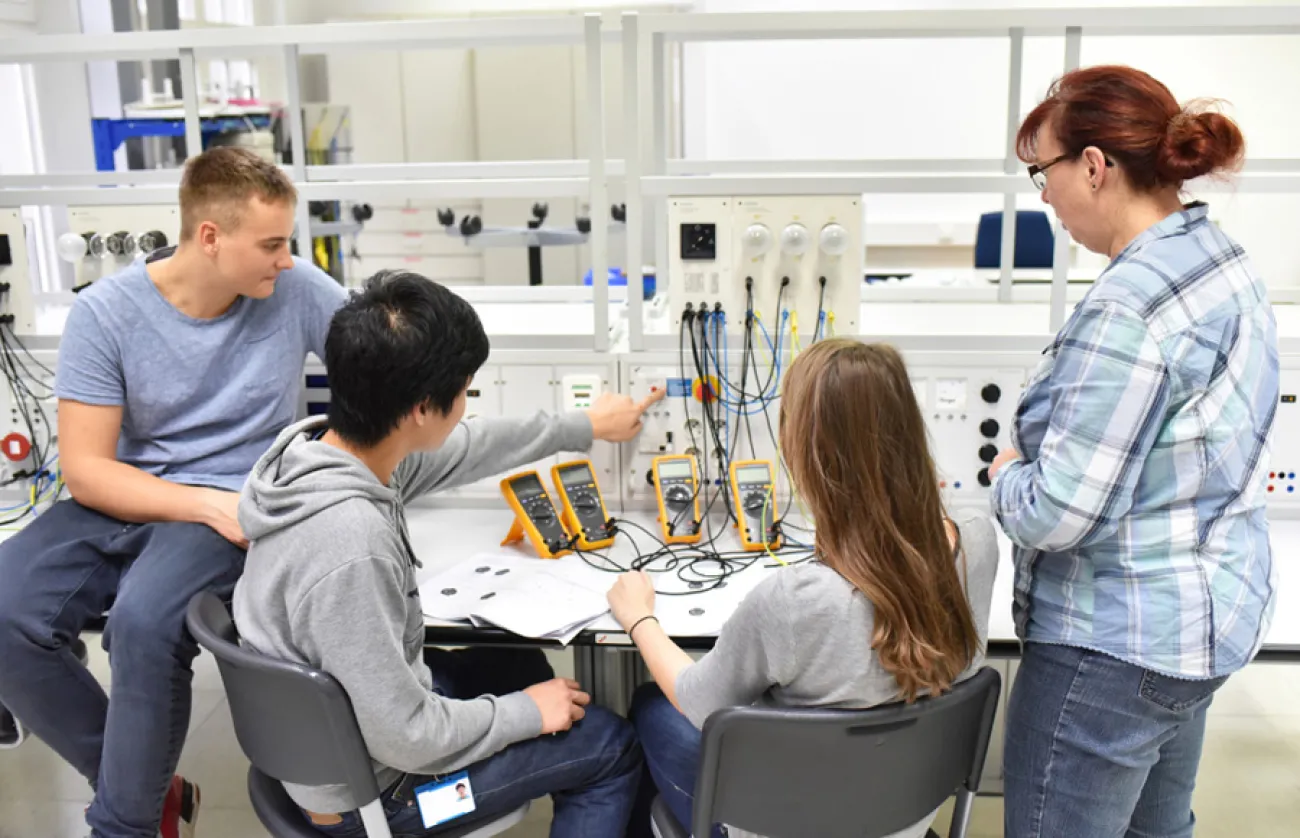
By Sarah Hicks
About 75% of high school students feel unprepared to make college and career decisions.
Think about the implication of that statistic. Only one-fourth of the students in this survey group are confident about their next steps.
One survey does not represent all students, but it’s representative of a universal need: To get a good start in work and in life, students need help discovering a career and navigating a path to it.
One group of experts argues that students need a GPS system — something tangible that shows them that it’s possible to get from Point A to Point B and the different ways to get there.
“All pathways to opportunity should come with directions,” said Greg Walker, senior vice president of the College Board, when he was leading a panel about the importance of showing students how to unlock their futures. “We know that student opportunities are vast, but the road to those opportunities is not just linear.”
For many students, finding the path to a career isn’t immediately clear — and it certainly isn’t straight — but if they can see where the path is going, the twists and turns become easier to navigate.
That’s why early and effective career counseling for students, particularly in middle school, is so important.
Why we need more career counseling and career exploration

A closer look at the survey results shows students are struggling to find and stay on a career path. The survey, which was conducted by YouScience, followed 500 U.S. students who graduated between 2019 and 2022.
The survey found:
- 53% changed their college major at least two times.
- 37% reported not feeling sure they are where they want to be in their chosen education or career pathway.
- 30% were not following any educational or career pathway.
It’s clear that students aren’t getting the information and tools they need to make good decisions.
Scott Solberg, vice president of research at the Coalition for Career Development Center, spoke at Walker's SXSW Edu panel about the importance of giving students the tools and confidence they need to succeed.
"Our aim is to show students that this career, this destination — which we know is completely gray and uncertain — is reachable.”
This is true no matter which path a student chooses to pursue. Whether a student wants to earn a four-year degree, a two-year degree or a one-year credential, career development makes it easier to see the end goal and stay focused.
"Career exploration opens doors," says Rebecca Corbin, CEO and president of the National Association for Community College Entrepreneurship (NACCE). "We know that when students see a strong connection between what they're learning in the classroom and how that skill applies in the real world. They are more excited to learn and more likely to keep going."
3 obstacles to providing more career counseling for students

Several obstacles stand in the way of a better, more uniformly useful system to help students find a fulfilling career.
1. There aren’t enough effective career development programs available.
“Extending the Runway,” new research into career exploration in 50 states from American Student Assistance (ASA) and Education Strategy Group (ESG), found that students need more time and experiences to successfully find a path.
Most states recognize the importance of career development, but there's often a lack of a statewide commitment to the programs, including financial support. Overall, there’s a disconnect between the acknowledged value of career counseling for students and actual implementation.
2. Career exploration isn’t happening early enough to help students, and it’s provided inconsistently throughout K-12.
"We’ve traditionally begun introducing young people to career-connected learning far too late,” writes Jean Eddy, CEO and president of ASA, in her new book, “Crisis-Proofing Today’s Learners: Reimagining Career Education to Prepare Kids for Tomorrow’s World.”
“It’s imperative that we start introducing kids to their options earlier on, to help combat the rampant uncertainty that so many young people face later in their education journeys."
Eddy is an advocate of introducing career exploration in middle school, when students are less stressed and open to more ideas. Others suggest introducing concepts even earlier. Elementary school students who hear from professionals what it’s like to do their jobs benefit from understanding what the job entails, even if they don’t yet know what that means for their own career path.
Career education also makes students aware of lesser-known, in-demand careers and helps them understand what they’re good at.
It’s important to introduce career exploration early and often — and in as many different ways as possible, explains Julian L. Alssid, partner at J. Alssid Associates, a workforce strategy consulting firm.
"Exposing students to diverse career paths from an early age is crucial for sparking their interests and helping them discover their true passions. In my experience, hands-on experiences, mentorship programs and industry collaborations can play a vital role in guiding students towards rewarding and fulfilling careers that align with their skills and aspirations."
3. The ratio of counselors to students contributes to the problem.
The recommended student-to-counselor ratio is 250-to-1, according to the American School Counselor's Association (ASCA). During the 2020-21 school year, the average student-to-counselor ratio was 722-to-1 in elementary and middle schools and 234-to-1 in high schools.
The gap widens when you compare states or school programs, according to the 2023 Report on the Condition of Career Readiness in the United States.
“The student-to-school-counselor ratios among top 10 and bottom 10 vary considerably. The average student-to-school-counselor ratio in elementary and middle schools was 485-to-1 among the top 10 states and 1,163-to-1 among the bottom 10 states. At the high school level, the ratio was 197-to-1 among the top 10 states and 261-to-1 among the bottom 10 states.”
Those differences play out in real life, says Yustina Saleh, managing director of Innovation Solutions at the Burning Glass Institute, who also participated in the panel.
“Sometimes, [students] get really good guidance and you see that they set off and really do it and keep continuing on a pathway that fulfills their passion — but many others don't," she said. "Through the data, we see that when people don't have a pathway, when they don't have direction, it can be really dangerous."

The importance of earning a living wage
A lack of career development isn’t just one missed opportunity. It’s a pattern that shows up many times in an individual’s life.
“It follows people well into the workforce, where vast pockets of workers are underemployed and being paid less than they need to get by,” says Eddy. “Forty percent of employed adults, even well before the pandemic, were one missed paycheck away from falling into poverty.”
Solberg and the team at the Coalition for Career Development Center (CCD) use the living wage as a barometer of how well individuals are doing. A living wage means working full-time and earning at least $25 per hour, a benchmark established by MIT’s Living Wage calculator.
The calculator provides an estimate of the wage rate that a full-time worker needs to cover the cost of their family’s basic needs where they live.
The CCD team focuses on young adults who are trying to gain a foothold and establish careers and families of their own. The group’s Condition of Career Readiness report reveals a precarious situation.
The national median hourly wage among full-time working young adults ages 19-27 is $12.69, about 50% less than the living wage estimate. Only 33% earn more than a living wage.
Adults aged 34-36 aren’t doing much better. About 55% of them work full-time, with 26% of that number earning more than $25 per hour. The current median hourly wage for full-time working adults aged 34-36 is $19.03.
At the same time, there are many in-demand skilled jobs going unfilled.
The 80 careers at SkillPointe, for example, don't require a four-year degree and earn more than a living wage. The Bureau of Labor Statistics predicts there will be 3.5 million openings annually for the next 10 years in those professions. If you assume those people will make gains over time — meaning their pay increases keep up with inflation — the numbers add up.
“Good career exploration and counseling can make a several hundred million dollar impact on economic mobility by moving these statistics even just a little bit,” said Todd Wilson, founder of SkillPointe.
The research: Career exploration changes lives for the better

Research reveals a pattern of what works. Introducing career exploration earlier, in middle school, and continuing into high school reduces students’ uncertainty and leads to more positive outcomes.
A series of papers from the Organization for Economic Cooperation and Development (OECD) Career Readiness project explores how career development programs benefit students in school and their transition to the workforce.
"Secondary school students who explore, experience and think about their futures in work frequently encounter lower levels of unemployment, receive higher wages and are happier in their careers as adults, according to "Indicators of Teenage Career Readiness," a paper that was part of the OECD series.
Career exploration, especially when introduced to students early in their education, has been linked to lower high school dropout rates, according to Fostering College and Career Readiness. Dropout rates are just one factor, but they reveal a high personal and societal price. The research shows that when students drop out, the negative effects include poorer health, higher incarceration rates, higher rates of individuals who qualify for free food programs and higher rates of needing public financial assistance.
Career exploration is especially helpful for low-income students, a group less likely to receive counseling or to see themselves as college- or career-ready.
McGill University researchers found that career development plans had a significant positive impact on low-income students' earnings, in part because informational and behavioral barriers were more significant obstacles for this group. The researchers followed 4,390 students from 30 high schools from the end of high school through age 28, offering in-depth career assistance to some and simplified financial grants to others.
Researchers estimated that by age 28, low-income students who received career education guidance were more likely to employed, and they earned 10% more on average in labor income than the low-income students who didn’t get career assistance.
What good career development systems look like

Beyond earnings, one of the greatest benefits of career exploration is its impact on aspirations and how aspirations lead to concrete progress.
"Once you have a plan and know what you want — watch out!" says Solberg. "That's identity. That's building a sense that 'Yes, I can.' We build that by having these active learning opportunities and having mentors who really help students believe in themselves. Then we just have to create the environment to let them go try it out."
Successful programs consistently provide these ingredients:
- DIY, but with assistance: The best programs let students lead the way, says Solberg. “The relevance is in the process of their discovery. It’s not from us telling them. They have to discover it in their own way.” But DIY doesn’t mean doing it alone. Successful programs consist of teams — counselors, coaches, teachers and importantly, parents — who offer mentoring and feedback and help students gain the confidence they need to drive the process.
- Variable: Activities during school hours are helpful, but so are extracurricular activities and events that happen at other times of day and through other sources.
- Integrated with technology: Students are more comfortable with technology than adults are. Utilizing online tools to explore careers and playing video games are natural ways students can solve problems and reach their own conclusions. EvolveMe, Riipen and MEFA Pathway are just a few of the platforms that encourage exploration through games, simulations and self-assessment. SkillPointe's two-minute carer quiz matches students with skills-based careers and makes them aware of lesser-known, in-demand careers .
- Personalized and fluid: Once a plan is developed, it should be updated regularly to help students explore careers, set realistic goals, make adjustments, develop necessary skills, and successfully navigate the transition from education to work.
- Hands-on: Project-based and hands-on learning opportunities make classroom learning more relevant. Work-based learning, such as earn and learn programs, internships and apprenticeships, should be scattered throughout a student’s education, not just in high school or beyond.
Sylvia Wood, a computer science teacher at St. Dominic Savio High School in Austin, Texas, who was named Cyber Teacher of the Year, uses projects to let students create their own learning path and show how they understand a concept.
“I tell them, ‘If you want to make a TikTok video and talk about this, go for it. If you want to do an infographic or go on Canva, that works too. If you want to make a game and show me that you understand this, awesome. You pick the medium’,” she said during the panel discussion. “Giving them that flexibility matters."
No single approach works for every school system. It tends to be a mixture of these ingredients that pay off over time. For example, intensive career coaching in Arkansas that lasts from seventh through 12th grade has made an impact on students' career readiness, according to the 2023 Career Readiness report from the CCD.
A five-year pilot study of Arkansas students found that adding career coaches in elementary, middle and high schools improved ACT scores, increased participation in postsecondary paths and reduced the need for remediation courses by 15.7%. The coaches worked alongside school counselors and career development instructors.
Fixing the career exploration system is necessary — and possible

Early and consistent career development opportunities help students broaden their ideas about what’s possible, choose a career that plays to their strengths and maximize their long-term success and income.
"We know career exploration helps students understand themselves and which jobs align with their strengths, but it does so much more than that. It helps them understand why a difficult class or concept matters and how mastering that concept relates to reaching a specific profession," said Rebecca Johnson, 2023 Alabama Counselor of the Year. Johnson is also group chair of the SkillPointe School Counselor Advisory Council, a group focused on increasing awareness of the skilled jobs as a lucrative career path.
Helping students think about, plan for and manage their careers pays dividends not only for individuals, but for society as a whole. Career development programs are an engine for economic growth.
Creating successful career development programs in all school systems is possible, Solberg says, but it requires that all parties — parents, schools, governments and employers — prioritize career exploration and pitch in.
"We've got some things we know are working. We need business and industry to join us now in making career readiness a major priority throughout all of education.”
Sarah Hicks is a writer and editor with expertise in workforce training and skills-based career opportunities.
Feeling overwhelmed with options?
Take the SkillPointe Quiz
It’s OK if you don’t know what you want to do. This short visual quiz will help you identify skills-based careers that best match your personality.
